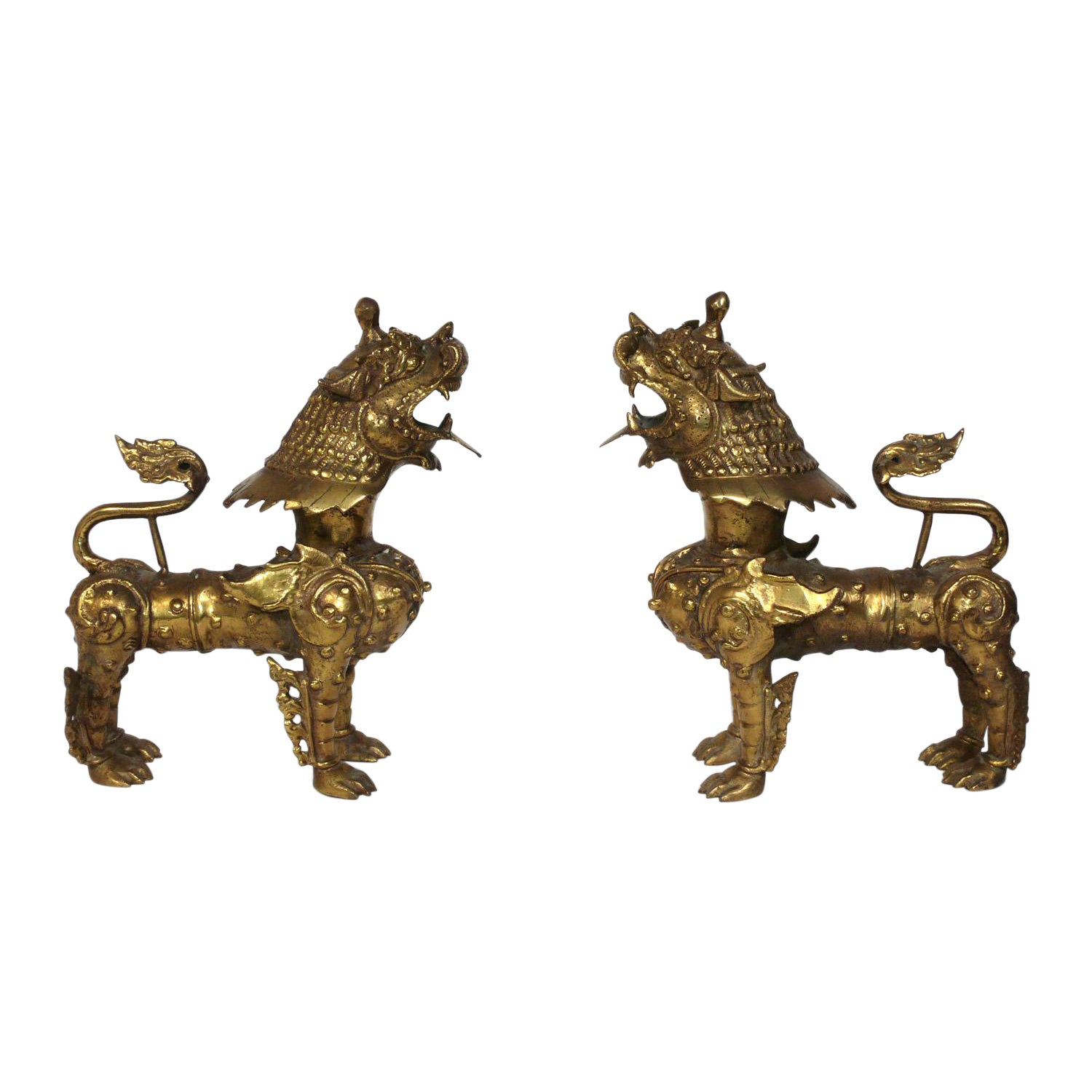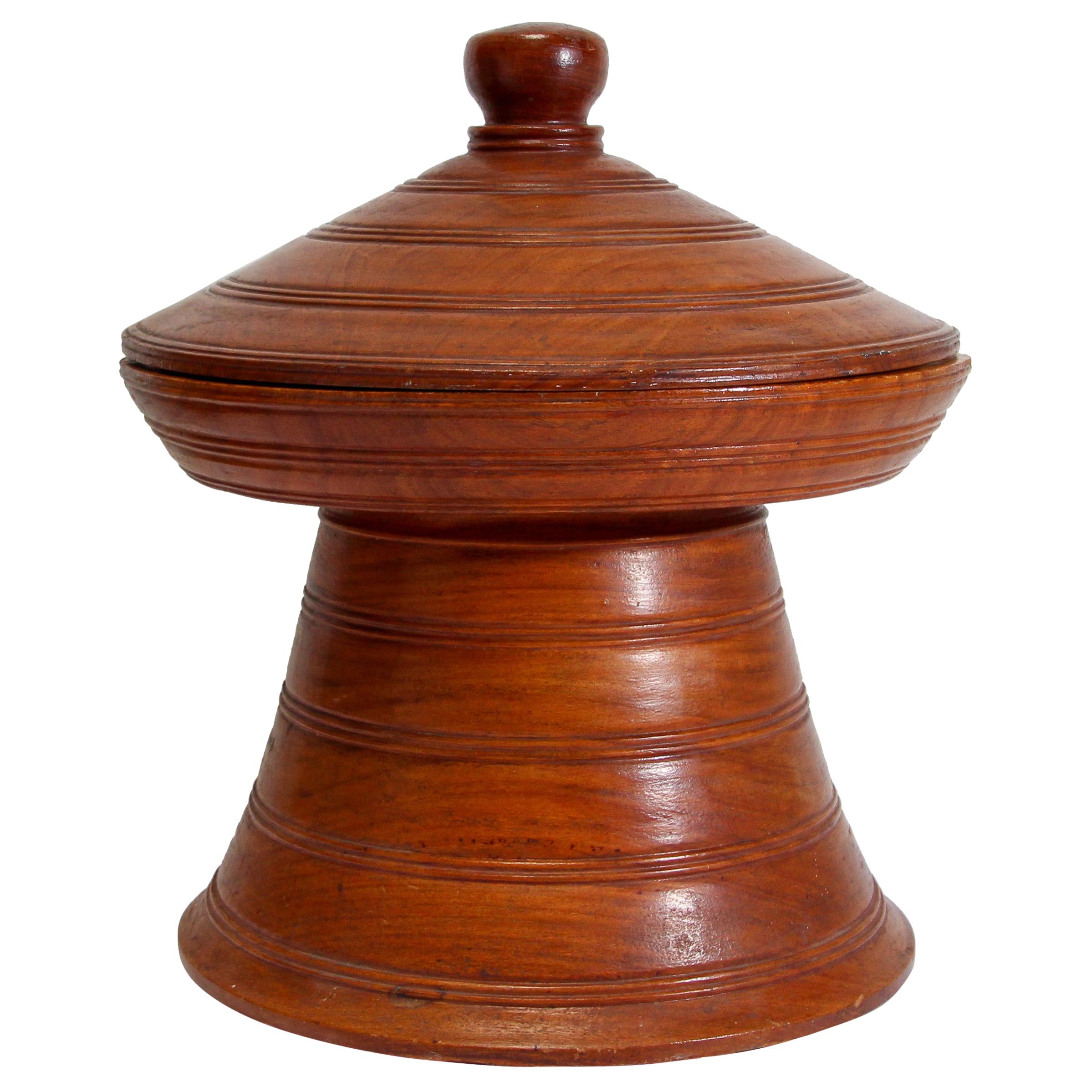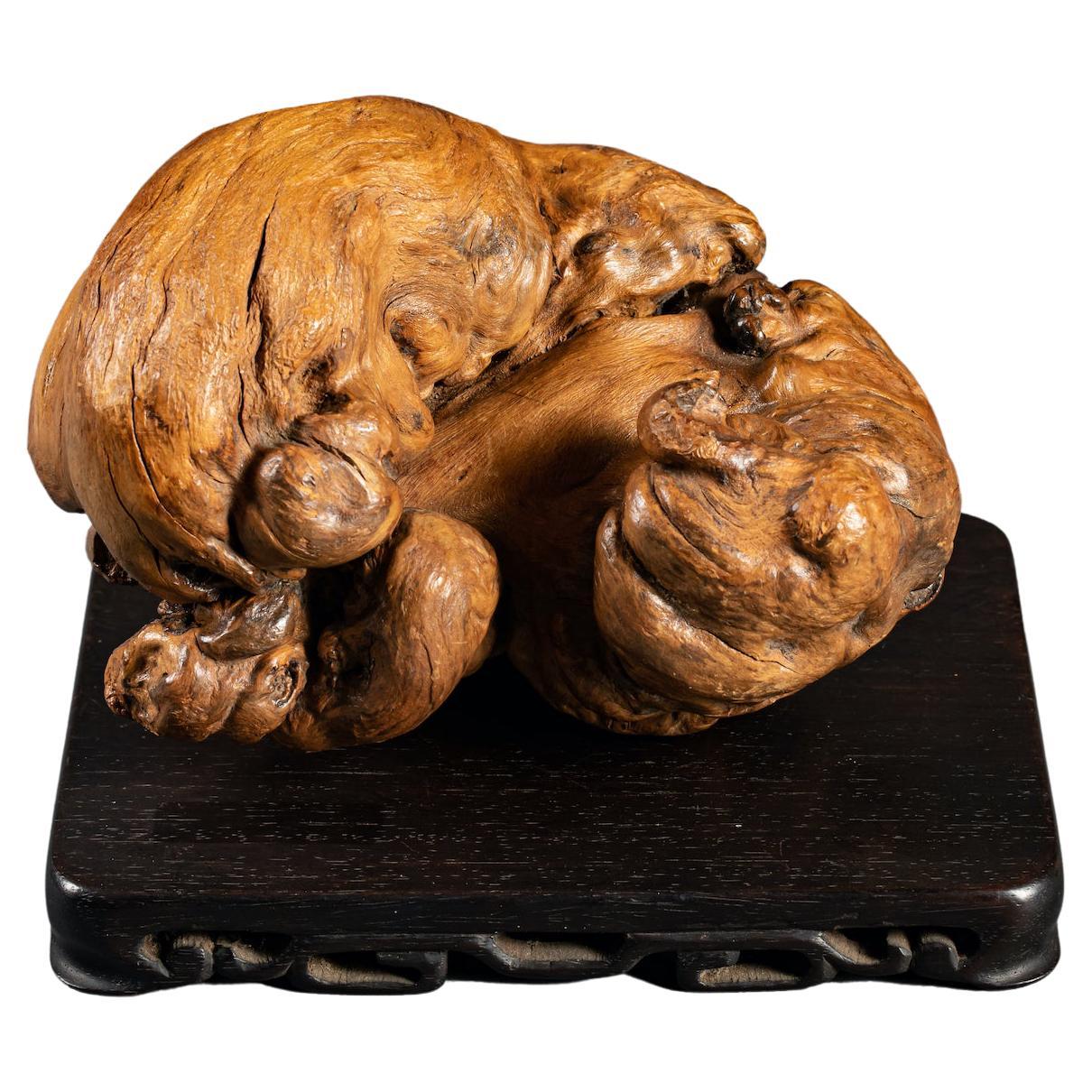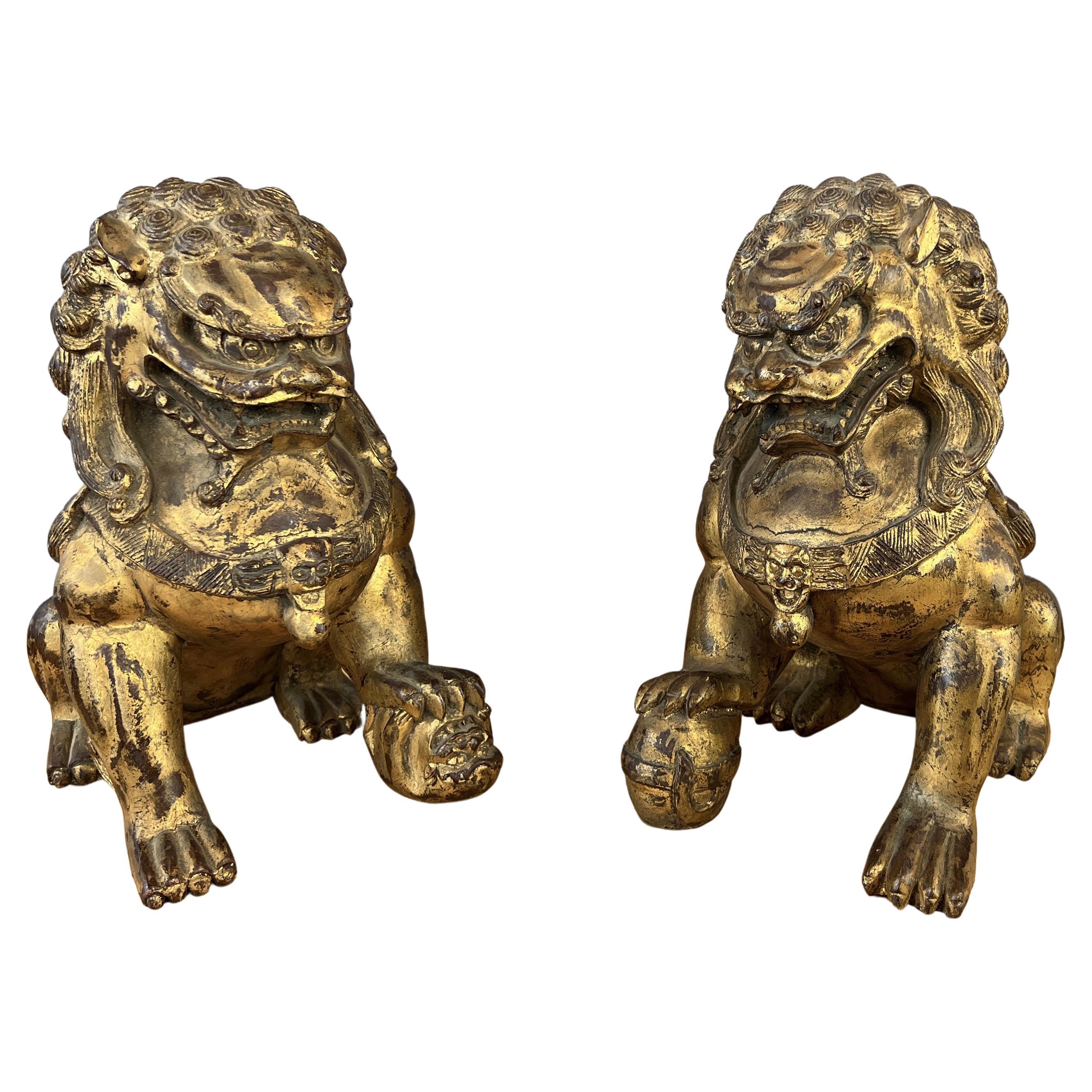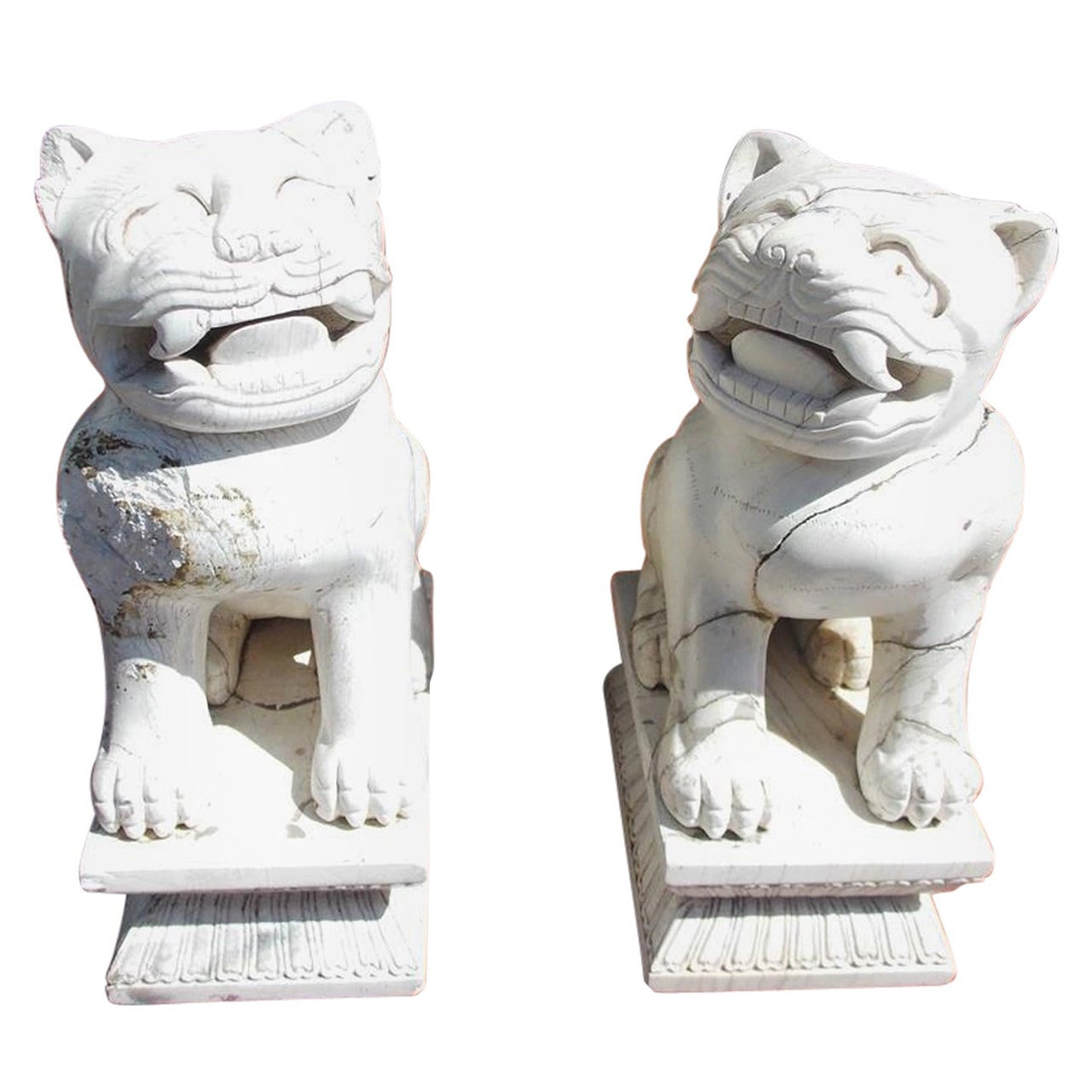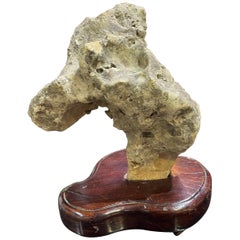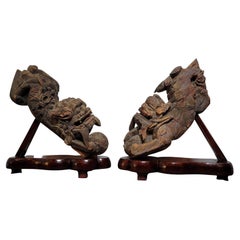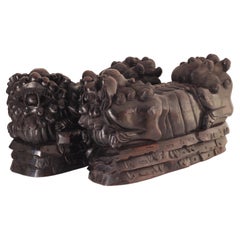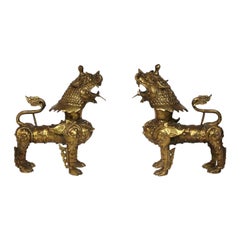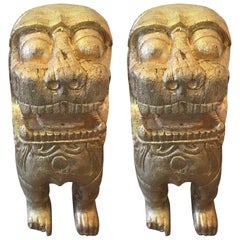
Two Carved Wood Asian Guardian Foo Lions
View Similar Items
Want more images or videos?
Request additional images or videos from the seller
1 of 9
Two Carved Wood Asian Guardian Foo Lions
About the Item
- Dimensions:Height: 36 in (91.44 cm)Width: 16 in (40.64 cm)Depth: 20 in (50.8 cm)
- Sold As:Set of 2
- Materials and Techniques:
- Place of Origin:
- Period:
- Date of Manufacture:1800-1900
- Condition:Wear consistent with age and use. Minor losses. Scattered splits in the wood. Partial loss to one paw on one lion.
- Seller Location:Chicago, IL
- Reference Number:Seller: MTP1stDibs: LU129124452173
About the Seller
4.6
Vetted Seller
These experienced sellers undergo a comprehensive evaluation by our team of in-house experts.
Established in 2010
1stDibs seller since 2015
271 sales on 1stDibs
Typical response time: 1 hour
More From This SellerView All
- Pair of vintage Asian inspired wood end tablesLocated in Chicago, ILThis is a great pair of sturdy hand crafted wood Asian inspired chests with one drawer and two door end tableCategory
Vintage 1980s Chinese Commodes and Chests of Drawers
MaterialsWood
$1,500 / set - Pair of Black Lacquered Two-Drawer End Tables or Nightstands Asian InspiredLocated in Chicago, ILThis is a pair of black lacquered wood end tables or nightstands Have two drawers in each table and are well constructed They have an Asian inspired look.Category
Antique 1880s Chinese Commodes and Chests of Drawers
MaterialsWood
- Asian Scholar StoneLocated in Chicago, ILThis is a curved chinese scholar stone set in a wood stand . With their exotic shape and many crevices these stones were highly appreciated and considere...Category
Early 20th Century Chinese Scholar's Objects
MaterialsStone
- Asian Scholar StoneLocated in Chicago, ILGongshi (chinese)also known as scholars rocks are naturally occurring or shaped rocks which are traditionally appreciated by chinese scholars. they can be any color and are in chines...Category
Early 20th Century Chinese Scholar's Objects
MaterialsStone
$1,500 - Xl Coral on Asian standLocated in Chicago, ILThis is a wonderful Pacific Elkhorn coral specimen on a black Asian stand.Category
Early 20th Century North American Natural Specimens
MaterialsCoral
$1,200 - Asian style red small chestLocated in Chicago, ILThis is a nice small two drawer and two door cabinet with an Asian style and metal hardware on frontCategory
Early 2000s Unknown Commodes and Chests of Drawers
MaterialsWood
You May Also Like
- Antique Asian Carved Foo Dog Lion Architectural Corbels, a PairLocated in Forney, TXA magnificent pair of Qing Dynasty (1644-1912) antique Chinese architectural elements with beautifully aged patina. circa 1900 Most impressive large scale, likely sculptural corbels from a Buddhist temple or imperial palace, late 19th / early 20th century, each intricately hand carved with very fine detailing, similarly styled pair, modeled as guardian foo lion, depicted with outstretched arched body, mouth ajar, clutching floral ball, having elaborate openwork carvings, with scattered remnants of original polychrome paint remaining. The highly decorative architectural salvaged ornamental building elements presented on custom made hand carved wooden sculpture stands...Category
Early 20th Century Chinese Qing Architectural Elements
MaterialsWood, Paint
- A pair of 19th Century carved Foo temple dogs or Chinese guardian LionsLocated in London, GBChinese guardian lions, or imperial guardian lions, are a traditional Chinese architectural ornament. Typically made of stone, they are also known as stone lions or shishi (石獅; shíshī). They are known in colloquial English as lion dogs or foo dogs / fu dogs. The concept, which originated and became popular in Chinese Buddhism, features a pair of highly stylized lions—often one male with a ball and one female with a cub—which were thought to protect the building from harmful spiritual influences and harmful people that might be a threat. Used in imperial Chinese palaces and tombs, the lions subsequently spread to other parts of Asia including Japan (see komainu), Korea, Philippines, Tibet, Thailand, Myanmar, Vietnam, Sri Lanka, Nepal, Cambodia, Laos, and Malaysia. There has been extensive interaction between Chinese mythology and Confucianism, Taoism, and Buddhism. Elements of pre-Han dynasty mythology such as those in Classic of Mountains and Seas were adapted into these belief systems as they developed (in the case of Taoism), or were assimilated into Chinese culture (in the case of Buddhism). Elements from the teachings and beliefs of these systems became incorporated into Chinese mythology. For example, the Taoist belief of a spiritual Paradise became incorporated into mythology as the place where immortals and deities used to dwell. Sometimes mythological and religious ideas have become widespread across China's many regions and diverse ethnic societies. In other cases, beliefs are more limited to certain social groups, for example, the veneration of white stones by the Qiang. One mythological theme that has a long history and many variations involves a shamanic world view, for example in the cases of Mongolian shamanism among the Mongols, Hmong shamanism among the Miao people, and the shamanic beliefs of the Qing dynasty from 1643 to 1912, derived from the Manchus. Politically, mythology was often used to legitimize the dynasties of China, with the founding house of a dynasty claiming a divine descent. Mythology and philosophy. Further information: Chinese philosophy True mythology is distinguished from philosophical treatises and theories. Elaborations on the Wu Xing are not really part of mythology, although belief in five elements could appear. The Hundred Schools of Thought is a phrase suggesting the diversity of philosophical thought that developed during the Warring States of China. Then, and subsequently, philosophical movements had a complicated relationship with mythology. However, as far as they influence or are influenced by mythology, divides the philosophical camps into two rough halves, a Liberal group and a Conservative group. The liberal group being associated with the idea of individuality and change, for example as seen in the mythology of divination in China, such as the mythology of the dragon horse that delivered the eight bagua diagrams to Fu Xi, and methods of individual empowerment as seen in the Yi Jing (Book of Changes). The Liberal tendency is towards individual freedom, Daoism, and Nature. The relationship of the Conservative philosophies to mythology is seen in the legendary Nine Tripod Cauldrons, mythology about the emperors and central bureaucratic governance, Confucianism, written histories, ceremonial observances, subordination of the individual to the social groups of family and state, and a fixation on stability and enduring institutions. The distinction between the Liberal and Conservative is very general, but important in Chinese thought. Contradictions can be found in the details, however these are often traditional, such as the embrace by Confucius of the philosophical aspects of the Yi Jing, and the back-and-forth about the Mandate of Heaven wherein one dynasty ends and another begins based according to accounts (some of heavily mythological) where the Way of Heaven results in change, but then a new ethical stable dynasty becomes established. Examples of this include the stories of Yi Yin, Tang of Shang and Jie of Xia or the similar fantastic stories around Duke of Zhou and King Zhou of Shang. Mythology exists in relationship with other aspects of society and culture, such as ritual. Various rituals are explained by mythology. For example, the ritual burning of mortuary banknotes (Hell Money), lighting fireworks, and so on. A good example of the relationship of Chinese mythology and ritual is the Yubu, also known as the Steps or Paces of Yu. During the course of his activities in controlling the Great Flood, Yu was supposed to have so fatigued himself that he lost all the hair from his legs and developed a serious limp. Daoist practitioners sometimes incorporate a curiously choreographed pedal locomotion into various rituals. Mythology and practice, one explains the other: in these rituals, the sacred time of Yu merges with the sacral practice of the present. Various ideas about the nature of the earth, the universe, and their relationship to each other have historically existed as either a background or a focus of mythologies. One typical view is of a square earth separated from a round sky by sky pillars (mountains, trees, or undefined). Above the sky is the realm of Heaven, often viewed of as a vast area, with many inhabitants. Often the heavenly inhabitants are thought to be of an "as above so below" nature, their lives and social arrangements being parallel to those on earth, with a hierarchical government run by a supreme emperor, many palaces and lesser dwellings, a vast bureaucracy of many functions, clerks, guards, and servants. Below was a vast under ground land, also known as Diyu, Yellow Springs, Hell, and other terms. As time progressed, the idea of an underground land in which the souls of the departed were punished for their misdeeds during life became explicit, related to developments in Daoism and Buddhism. The underground world also came to be conceived of as inhabited by a vast bureaucracy, with kings, judges, torturers, conductors of souls, minor bureaucrats, recording secretaries, similar to the structure of society in the Middle Kingdom (earthly China). Chinese temple Dogs...Category
Antique 1860s Chinese Chinese Export Sculptures and Carvings
MaterialsHardwood
- Asian Bronze Foo DogsLocated in Atlanta, GAPair of Asian Bronze Foo Dogs or Kylin Dragon, probably Tibetan, circa 1940s or earlier. They retain their warm original patina. These were purchased f...Category
Vintage 1940s Tibetan Chinoiserie Sculptures and Carvings
MaterialsBronze
$1,800 / set - Asian Burmese Carved Wood Temple Offering Lidded BoxLocated in North Hollywood, CABurmese bamboo temple offering lidded box, basket. This kind of wooden basket is used to transport and display offerings to Buddhist temples, in Asia....Category
Early 20th Century South Asian Folk Art Decorative Boxes
MaterialsBamboo
- Japanese Root-Wood Sculpture of Two Shi Shi Lion PupsLocated in Hudson, NYwith rosewood stand. Must use imagination to see. Collectors kiri-wood box.Category
Antique Late 19th Century Japanese Sculptures and Carvings
MaterialsWood
- Vintage Pair Chinese Gilt Carved Wood Foo Dog / Guardian Lions FigurinesLocated in San Francisco, CAOffered here are a pair vintage Chinese gilt and carved wood Foo Dog/Guardian Lions figurines Wonderful craftsmanship with the hand carving that has gone...Category
Vintage 1940s Chinese Chinese Export Sculptures and Carvings
MaterialsGiltwood
$980 Sale Price / set30% Off


